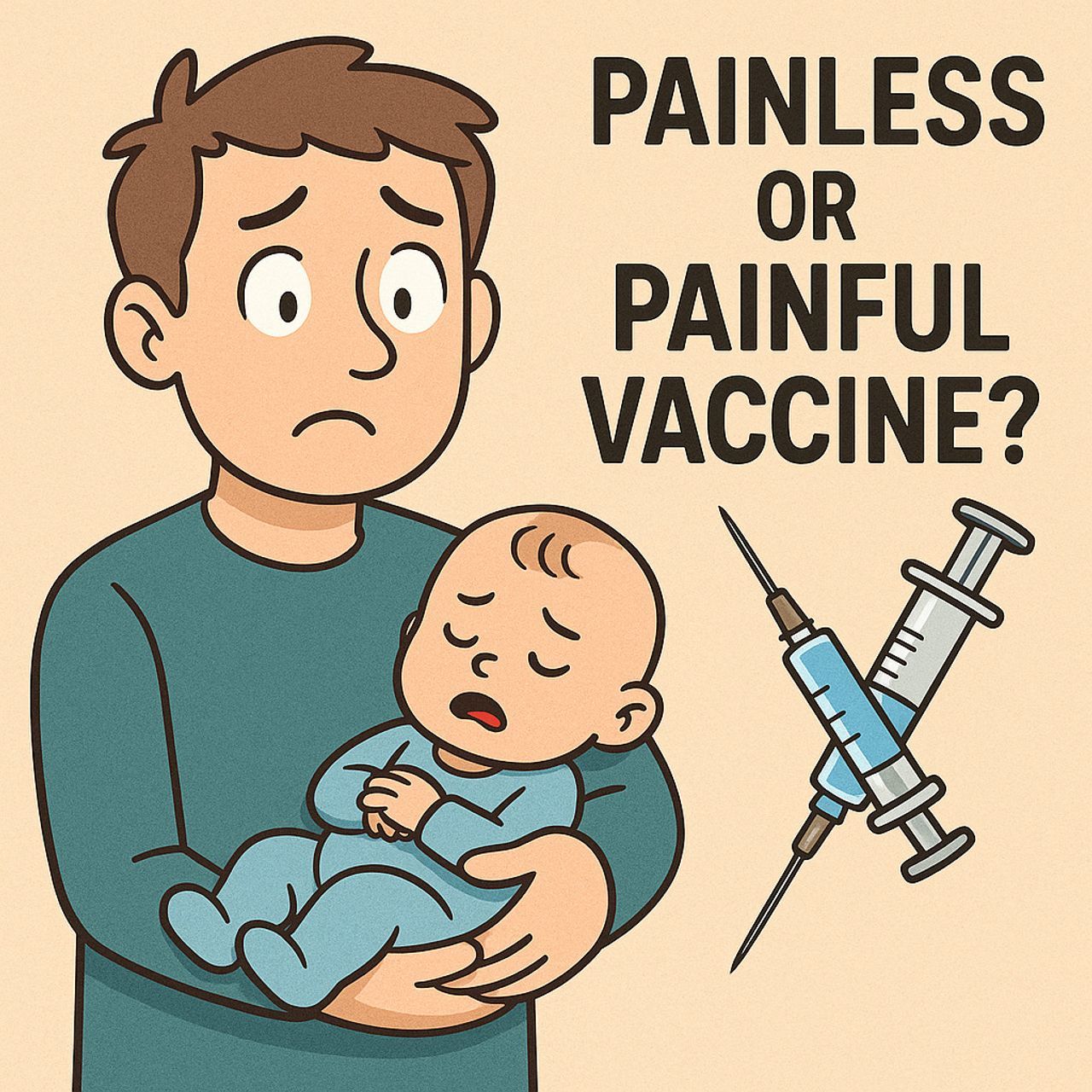Painless vs. Painful DPT Combos: A Parent’s Simple Guide

🐼 Painless vs. Painful DPT Combos: A Parent’s Simple Guide
Getting your baby’s DPT (diphtheria-pertussis-tetanus) combo vaccine is non-negotiable—but choosing between “painful” and “painless” options can feel overwhelming. This guide breaks it down so you can make a confident, informed choice.
👉 Explore all DPT options on Vaccine Panda’s DPT Category Page
1️⃣ Painful vs. Painless: What’s the Real Difference?
DTwP (“Painful”): Uses whole-cell pertussis. It triggers a stronger immune response but comes with more post-shot discomfort—pain, swelling, fever, and irritability within 24–72 hours.
DTaP (“Painless”): Uses purified (acellular) pertussis components. Reactions like soreness and fever are milder and shorter-lived, though the needle prick still stings.
✅ Both protect equally well when the full schedule is completed.
| Vaccine Brand | Type | Combo | Price Range (₹) | Available on Vaccine Panda |
|---|---|---|---|---|
| Hexasil | DTwP | 6-in-1 | ~2,700 | ✅ Yes |
| EasySix | DTwP | 6-in-1 | ~3,000 | ✅ Yes |
| Infanrix Hexa | DTaP | 6-in-1 | ~4,500–5,000 | ✅ Yes |
| Hexaxim | DTaP | 6-in-1 | ~4,000–4,800 | ✅ Yes |
💡 Note: All four vaccines include protection against polio, hepatitis B, and Hib—making them powerful 6-in-1 combos.
3️⃣ Immunogenicity & Trial Data
Hexasil vs. EasySix: Both whole-cell combos show ≥95% efficacy across all six diseases in Indian trials.
Infanrix Hexa vs. Hexaxim: Both acellular combos reach >95% seroprotection. Long-term studies show equal durability over 2–4 years.
📊 Real-world data confirms high protection rates—regardless of “painful” or “painless”—as long as the full schedule is followed.
4️⃣Safety & Side-Effect Profiles
| Vaccine Type | Local Reactions | Systemic Reactions |
|---|---|---|
| DTwP | Moderate–severe pain, swelling, redness | Fever >38°C, prolonged crying, irritability |
| DTaP | Mild pain, minimal swelling | Low fever, brief fussiness |
Whole-cell DTwP: More discomfort but no long-term safety concerns.
Acellular DTaP: Easier recovery for baby and parents—especially in the first 48 hours.
5️⃣ WHO Prequalification: Global Quality Assurance
🚫 Not PQ: Infanrix Hexa, EasySix
PQ status matters most for large-scale public programs. All four are approved by India’s national regulator for routine immunization.
6️⃣ Making Your Choice: Bottom-Line Recommendations
🎯 Cost-conscious families: Go with Hexasil—strong protection at the lowest price.
🧸 Minimal post-shot fuss: Choose Infanrix Hexa or Hexaxim—gentler reactions, easier recovery.
⚡ Ease of use: Hexaxim is fully liquid—no mixing, faster administration.
🌍 Global track record: Infanrix Hexa: 24+ years in 100+ countries Hexaxim: 11 years in 60+ countries
✅ Final Word: Protection First
All four vaccines offer excellent protection. Your choice depends on:
Budget
Reaction tolerance
Convenience
Global certification comfort
📅 Make sure your baby completes all primary doses at 6, 10, and 14 weeks—plus boosters if needed. These combos are only used in the first year of life for primary immunization. Boosters are given only if other options aren’t available.
🔍 Browse all DPT options on Vaccine Panda’s DPT Category Page



